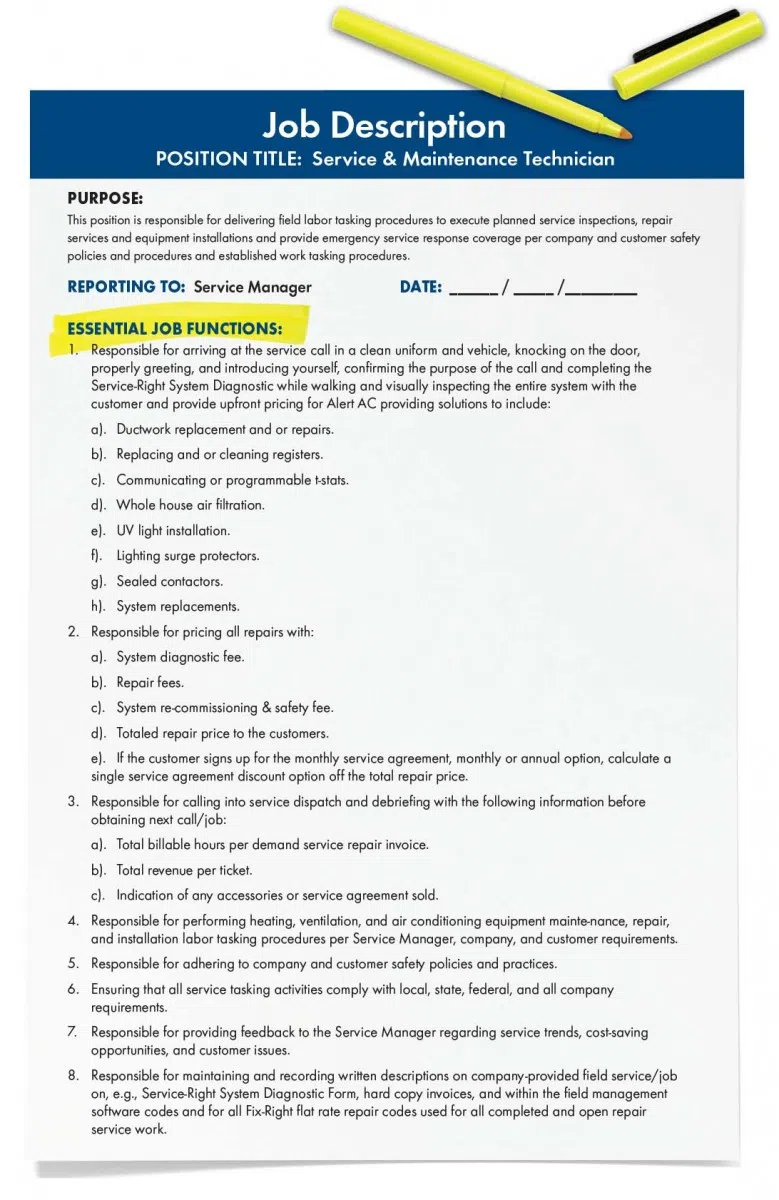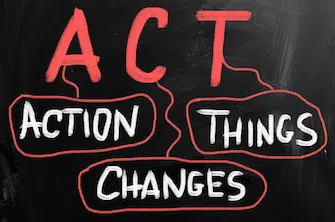This is the first installment of a six-part series designed to be a complete A-Z on how to sell and organize for commercial service agreements. The Selling Commercial Service Agreements series includes the following topics:
- Preparing for service agreement surveys
- Equipment and system surveying and data gathering
- Profitable pricing strategies to win the business
- Proposal writing strategies
- Hiring and compensating sales service sales reps
- Organizing for service agreements
Part I: Preparing for Service Agreement Surveys
Commercial service agreement sales reps don't sell things. They use a consultative approach to provide solutions to their customers' problems. Customers choose the option that best meets their unique business and technical requirements.
The rep's primary job is to develop new business by seizing upon prospects' mechanical maintenance opportunities. Sometimes they provide supplemental — and in other cases the complete — on-site mechanical maintenance staffing. Reps must have an in-depth understanding of their company's maintenance product offerings.
For each type of equipment and how it is being used, they must know what maintenance tasking must be done, how often; and what programs will best meet the customer's financial and technical requirements. HVACR equipment and systems are building-owner assets that must be maintained to assure equipment lasts as long, or longer, than it is being depreciated.
Here are some important facts that you and your sales reps can use during your customer-development process:
- The equipment-depreciation range for most HVACR equipment is usually 15 years, and 25 years for boilers and chillers. If maintenance-related catastrophic failures are happening, it's proof that a prospect's existing maintenance program is not working.
- HVACR equipment represents 15 percent or more of the owner's operating and energy budget. Poorly maintained equipment can cause this to increase to 20 percent, or in some cases, exponentially.
Therefore, the primary objective when consulting for clients is to determine how the equipment is being maintained and whether the current program is adequate or is actually being implemented. This is where opportunity lies.
Consider these facts:
- Studies have shown that 60 percent of all building owners are unhappy with the delivery of some or all aspects of their HVACR services, which means that you have greater than a 60 percent chance of winning their business if you can demonstrate that you can deliver better than the competition in the areas where they are dissatisfied.
- Unless you go through the trouble to find areas where you can demonstrate a difference, such as signs of poor maintenance or offering programs that better meet your customer's business and technical requirements, you will not find where your competitor is falling down. In many cases, even the customer is not aware of problems until you bring them to their attention. Quality is seen only when it is compared with the competition.
Equipment Surveying and Maintenance Requirements
To identify the various types of HVACR equipment in the field, you should have a survey form along with the survey tools to access, open, and view general equipment system condition information. You are simply looking for signs of poor maintenance and comparing customers' existing programs with what the manufacturers or industry best practice recommends for maintenance tasking procedures.
For example, 60 percent or more of the time you will find evidence of poor maintenance practices such as:
- Missing or inappropriate filter types and or sizes
- Dirty coils or heat transfer surfaces
- Leaks (e.g., air, oil, water, glycol, chemical)
- Missing system components (e.g., compressors, fan motors, linkages)
- Broken parts
- Safety or EPA violations (e.g., electrical panel missing, belt covers, broken ladders)
- Extended operating cycles due to inappropriate equipment application or undersized
- Inappropriate maintenance frequencies (too many or too little)
- No access to equipment or unsafe access (e.g., units over stairwells or electrical equipment)
All of these situations enable you to present and demonstrate how your services are better.
Reference Library
Another important step is to develop an equipment-and-product reference library so that you can quickly identify the following:
- Equipment capacity and specification data (CFM, tonnage, Horse Power, BTU's, etc.)
- Filter size and recommended efficiency ratings
- Available equipment add options
- Recommended equipment maintenance tasking and procedures
Today, most equipment manufacturers provide online cut sheets for their products that can be downloaded. You'll find enough information to support your program recommendations or your findings of a competitor's poor practices.
Field Survey Tools
You don't need to be an engineer to perform a good system survey. Your job during the initial survey is to identify signs of poor maintenance only. Naturally, the first mechanical inspection done by your trade mechanic will identify broken components and other system problems.
The following survey tools are recommended:
- Flash light, to see into equipment cabinets, coil housings, and other poorly lighted areas where equipment can be found, such as in crawl spaces and above dropped ceilings.
- Camera, to take pictures of signs of poor maintenance. Digital cameras are preferred for ease of incorporating pictures into a proposal.
- 10-in-1 multi-tool, to open up cabinets to check filters, coils, and make/model numbers.
- Survey forms and pencil, to record equipment and system data.
The above tools will allow you to see into equipment and record signs of poor maintenance. The survey forms will allow you to gather information in a logical manner for input into your estimate. Combined, these tools will allow you to develop profitable and professional service agreement proposals. Now let's take a look at how to identify poor maintenance in a package rooftop unit system, which represents more than 90 percent of all commercial HVAC equipment
Packaged Rooftop Units (Constant volume, single zone, includes heat pumps)
Signs of poor maintenance:
- Covers missing, screws (usually on roof).
- Dirty coils, cabinets, leaks, or noisy belts.
- Maintenance supplies or equipment refuse in or around unit.
- New compressor(s).
Maintenance questions to ask:
- Comfort problems?
- Accessibility?
What to do with the information: In many cases, you will find evidence of recent catastrophic failures such as compressor replacements. The case can be made that a replacement in year five of a 15-year equipment cycle is evidence that the existing maintenance program is not working. We will cover positioning strategies later in the series.
Customer Presentation Package
Your customers typically are professional business people and cannot afford to have you waste their time telling your company story. Therefore, develop a PowerPoint presentation to be printed out in color and insert it into a landscape desktop-presentation folder to present to new customers.
The idea here is to present your process and do so by keeping your message on each slide very brief, with no more than three to four bullet points. Here is a best practices service agreement presentation outline.
Objective of call:
- Introduce yourself and your company
- Identify your business and technical objectives
- Survey your HVACR equipment
- Explore options with you to optimize your maintenance budget
- Present the best program to meets your needs
Company introduction:
- 34-year old commercial service company
- Consistently grown each year due to our competitive programs and services
- Has continued to invest in state-of the art technology that allows us to deliver the highest level of service with the lowest possible cost
- Focus on training and employee development programs assures the delivery of safe reliable service
Customer requirements (Customize this for your target market)
Our goals are to:
- Avoid expensive downtime
- Maintain proper comfort and indoor air quality
- Reduce energy waste
- Extend the equipment asset value
- Obtain the lowest possible costs
- Eliminate business and technical risks
How you will be meeting their needs:For each requirement you should address how you will meet them via benefit selling. Examples:
- Reduce expensive downtime by providing manufacturers recommended maintenance tasking
- Maintain proper comfort and IAQ by maintaining your equipment at original design specifications
- Reduce energy waste by tuning equipment and cleaning heat transfer surfaces
Without proper maintenance cost analysis:
With proper maintenance cost analysis:
Our strengths (recap of benefits summary):
- We are organized to meet the unique needs of your industry.
Next steps:
- Survey your equipment to verify program maintenance tasking requirements
- Identify options to improve equipment performance or reduce operating costs
- Upon completion of survey explore your options prior to finalizing program scope of work
- Develop final program and present





